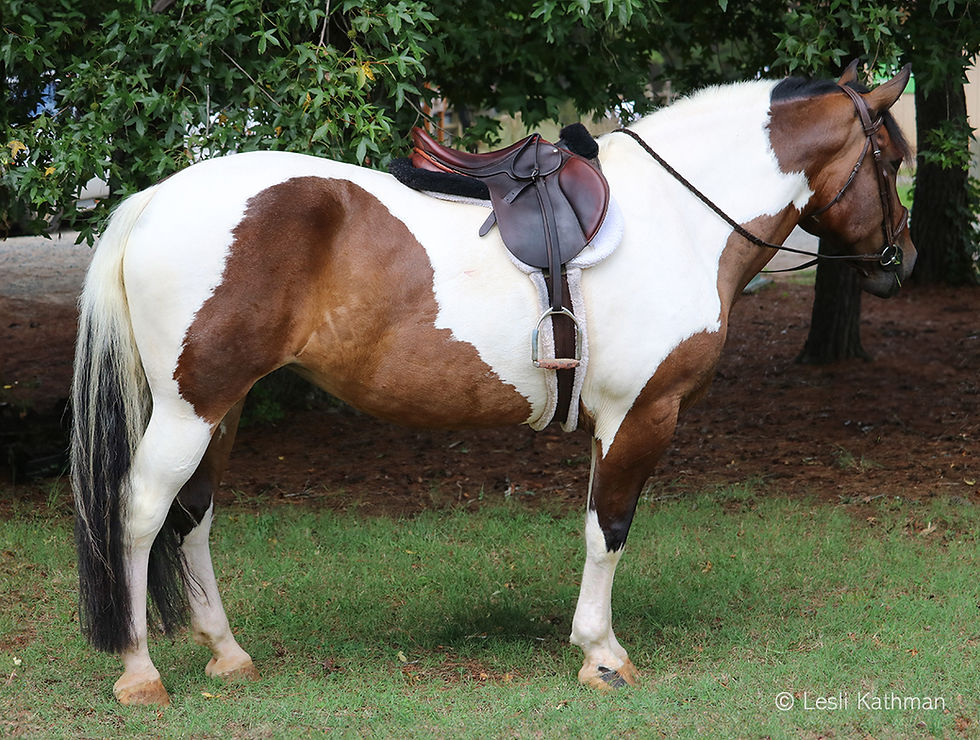Friday inspirations 5
- Lesli Kathman

- Apr 19, 2024
- 3 min read
Updated: May 23, 2024

Several of this week's inspiration horses are unusual duns, so I thought I would start with a different kind of dun variation. One of the "rules" given for duns is that they have a distinct dorsal stripe that runs continuously from the base of their mane through their tail. Fjords are one of the breeds where the part about being continuous doesn't always apply. Their dorsal stripes, which are often relatively narrow, sometimes fade across the top of their croup.

I'll start this week's group with another rule-breaking dun. This time it is the rule that duns, unlike cream dilutes, do not dapple. Few colors show dappling—in all its forms—like cream; duns probably occupy the other end of the spectrum. It can happen, though, as the first horse shows.
(Remember that clicking on the title for each horse takes you to a linked image.)
Premera
(Motor – Perspektiva)
For years, I held on to an image of a dappled grulla Vyatka clipped out of a picture book on horse breeds. It was proof that it could happen, but I didn't know then that it was oddly common in this breed. This mare is a fairly dark grulla, so the dapples are quite visible. Clicking on the title link takes you to an image that shows the dappling and the dark ventral line many duns have.
More photos of Premera (part of the same photo shoot as the title link image)
Here is a lighter grulla gelding, Belogor, showing dappling. (This is also a lovely reference image for the dark masking seen on duns.)
Lotus
As with many primitive breeds, the preferred color for Vyatkas is dun. However, not all Vyatkas are homozygous for dun. Some of the duns also carry cream. Bay duns with the cream dilution tend to have a more yellow tone. For some reason, they often lack the face masking typical in duns. Both of those things can be seen in the linked image.
His dam, Lika, appears to be the source for cream. She’s also heterozygous for dun. Here is her 2021 bay filly, Lamura.
Swan
(Brand - Chronicle)
If there was any doubt that the cream dilution was present in the Vyatka breed, this stallion gives a more definitive answer. (If you follow the link to the image of his buckskin dun sire, Brand, you can see the difference in his color and mask.) Conformation shot
Zidane Zojvide
Back when I began collecting photos and pedigrees of horses that had the classic splashed white pattern (as described by Klemola in the 1930s), one question I had was whether or not the homozygous horses could have a dark eye. After classic splash was formally identified and named SW1, I began seeing homozygous horses with dark eyes and minimized patterns. What makes this pony interesting is that his pattern is pretty typical for a homozygous splash, but he has a dark eye.
Sign The Dotted Line
(The Outfitter – LT Jet's Gypsy Baby, Legacy of the Jet)
As far as I know, this gelding hasn't been tested for splash. However, given the blue eyes and flashy white markings, he likely carries a splashed white pattern. He carries more than one line to Bright Eyes Brother, which is a source for SW1 in the breed. He is also a good reference for the way many leopard patterns have ticking on their forehand, but primarily clear white around the spots on their rump. This gives a "blanket pattern underneath the leopard" effect. Auction entry (more photos)
Looking Glass Wild Blue Vision
(Looking Glass Born To Be Wild – Looking Glass Wild Violet, Falabella af Perezoso)
One of the fascinating things about the Leopard Complex (Lp) gene in appaloosas is how much it varies. This Falabella has a snowflake pattern and is also color-shifted. Some of the muting of his color may come from being clipped, but even so, the color has a bit of the warm tone I associate with a shifted black horse.


